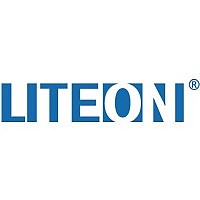HSDL-3201-008 Lite-On Electronics, HSDL-3201-008 Datasheet - Page 19

HSDL-3201-008
Manufacturer Part Number
HSDL-3201-008
Description
IRDA TX/RX 0.1152Mbps 3.3V 8-Pin Ultra Small Profile T/R
Manufacturer
Lite-On Electronics
Type
TX/RXr
Datasheet
1.HSDL-3201-008.pdf
(20 pages)
Specifications of HSDL-3201-008
Package
8Ultra Small Profile
Maximum Communication Distance
30 cm
Half Intensity Angle Degrees
60(Max)/30(Min) °
Maximum Data Rate
0.1152 Mbps
Peak Wavelength
875/880 nm
Pulse Width
1.6/2.45 us
Radiant Intensity
9 mW/sr
Operating Supply Voltage
2.7 to 3.6 V
Test Methods
Background Light and
Electromagnetic Field
There are four ambient interference
conditions in which the receiver is to
operate correctly. The conditions are
to be applied separately:
1. Electromagnetic field:
2. Sunlight:
19
IEC 801-3, severity level 3 for
details).
port. This is simulated with an IR
source having a peak wavelength
within the range of 850 nm to 900
nm and a spectral width of less
than 50 nm biased to provide 490
the optical port. The light source
faces the optical port.
This simulates sunlight within the
IrDA spectral range. The effect of
longer wavelength radiation is
covered by the incandescent
condition.
3 V/m maximum (please refer to
10 kilolux maximum at the optical
W/cm
2
(with no modulation) at
3. Incandescent Lighting: 1000 lux
4. Fluorescent Lighting:
maximum. This is produced with
general service, tungsten-filament,
gas-filled, inside frosted lamps in
the 60 Watt to 100 Watt range to
generate 1000 lux over the
horizontal surface on which the
equip-ment under test rests. The
light sources are above the test
area. The source is expected to
have a filament temperature in the
2700 to 3050 Kelvin range and a
spectral peak in the 850 to 1050
nm range.
1000 lux maximum. This is
simulated with an IR source having
a peak wavelength within the
range of 850 nm to 900 nm and a
spectral width of less than 50 nm
biased and modulated to provide
an optical square wave signal
(0
0.3 W/cm
10% to 90% rise and fall times less
than or equal to 100 ns) over the
horizontal surface on which the
equipment under test rests. The
W/cm
2
2
peak amplitude with
minimum
and
light sources are above the test
area. The frequency of the optical
signal is swept over the frequency
range from 20 kHz to 200 kHz.
Due to the variety of fluorescent
lamps and the range of IR
emissions, this condition is not
expected to cover all circum-
stances. It will provide a common
floor for IrDA operation.




















